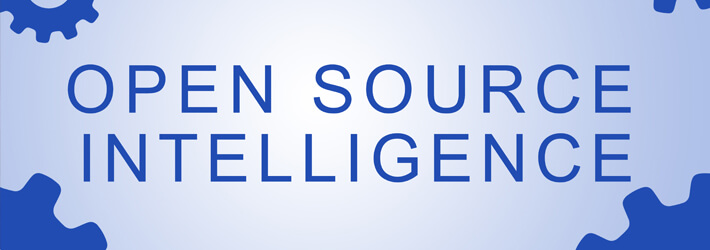Last Updated on December 24, 2024 by Deepanshu Sharma

Open Source Intelligence (OSINT) is a methodology focused on collecting and analyzing publicly available information to extract valuable insights (Tuominen, 2019). Currently information is readily available and abundant which makes OSINT highly relevant. Using OSINT, data must be collected from a range of publicly accessible sources, including websites, social media platforms, news sources, public records, and government reports, among others, in order to finish this process as highlighted by Tuominen (2019). An important component of OSINT is the extraction of insights, patterns, and trends from this data to support strategic planning and decision-making.
According to Hassan’s book, OSINT strictly adheres to legal and ethical boundaries (Hassan, 2019). Unlike the covert intelligence gathering techniques that are used in hacking or espionage, open-source intelligence collection (OSINT) does not entail illicit activity or unapproved access to private or confidential data. Rather, it is predicated on data that is publicly available, does not violate any laws, and does not violate the right to privacy of individuals. Because of its moral basis, OSINT stands out as a respectable and useful intelligence field with numerous applications in diverse industries.
Public Sources Used in OSINT
In their research, Julan & Togan (2023)list the various sources that OSINT use to draw its information. These sources are publicly available hence providing rich information for analysis and interpretation. They include:
1. Websites
Websites serve as primary sources of information for OSINT practitioners. There is a wealth of information available on the internet covering a wide range of subjects, businesses, and hobbies, from personal blogs to corporate websites (Julan & Togan, 2023). Websites can include a variety of information, from product descriptions and company profiles to person biographies and community forums.
2. Social media platforms
According to Julan & Togan (2019) social media platforms such as Facebook, Twitter, LinkedIn, Instagram, and YouTube offer rich sources of real-time data and user-generated content. OSINT analysts leverage social media to monitor public sentiment, track events, identify trends, and gather insights into individual behavior, affiliations, and connections.
3. News
Online journals, news aggregators, and traditional news sources are excellent sources of knowledge about global developments, trends, and current events (Julan & Togan, 2023). In order to stay informed on breaking news, new threats, geopolitical events, and industry-specific trends that are pertinent to their fields of interest, OSINT analysts keep an eye on news sources.
4. Public records
Government agencies, regulatory bodies, and other organizations maintain extensive repositories of public records, including legal filings, property records, financial disclosures, court documents, and administrative records (Julan & Togan, 2023). OSINT practitioners access these records to gather factual information, verify identities, and uncover relationships between entities or individuals.
Other sources OSINT analysts may utilize include a wide range of additional resources, including academic publications, research papers, online forums, public databases, satellite imagery, and open-source software tools.
How OSINT Empowers Various Individuals and Organizations
Businesses – OSINT provides businesses with valuable insights into market trends, consumer behavior, competitor strategies, and emerging opportunities. Businesses can make informed decisions regarding product development, marketing campaigns, and expansion strategies by monitoring social media, analyzing online reviews, and tracking industry news (Sari et al., 2018). OSINT also helps businesses mitigate risks, such as reputational damage, cybersecurity threats, and supply chain disruptions, by proactively identifying potential issues and vulnerabilities.
Governments – Governments use open-source intelligence (OSINT) for a variety of objectives, such as foreign policy, law enforcement, disaster relief, and national security (Unver, 2018). Governments can evaluate security concerns, keep an eye on geopolitical trends, and learn more about enemies thanks to OSINT. Additionally, it helps law enforcement organizations with their counterterrorism, criminal investigations, and border security initiatives.
Journalists – OSINT plays a crucial role in modern journalism by enabling journalists to conduct in-depth investigations, fact-checking, and data analysis (Pournis, 2022). Journalists use open-source intelligence (OSINT) to confirm material, validate sources, and find hidden linkages in intricate stories. Journalists can unearth corporate misbehavior, human rights violations, government corruption, and other important public interest concerns with the aid of OSINT technologies and tactics.
Private citizens – OSINT empowers private citizens to gather information, advocate for causes, and protect their interests in various contexts. Individuals use OSINT to research potential employers, investigate online scams, and vet service providers before making purchasing decisions (Pournis, 2022). OSINT also enables activists, researchers, and citizen journalists to document human rights abuses, track environmental degradation, and expose misinformation campaigns.
Benefits and Advantages
Cost-effectiveness – OSINT is a cost-effective intelligence-gathering method compared to traditional forms of intelligence collection, such as human intelligence (HUMINT) or signals intelligence (SIGINT) (Fincher, 1976). Since OSINT relies on publicly available information, the costs associated with acquiring data are relatively low.
Legality – Unlike some forms of intelligence gathering that may involve legal or ethical concerns, OSINT operates within legal boundaries and respects individual privacy rights. By relying on openly accessible information, OSINT avoids the legal and ethical challenges associated with covert or clandestine activities.
Ethical nature – OSINT is inherently ethical when used responsibly and in accordance with ethical guidelines and principles. By focusing on publicly available information, OSINT minimizes the risk of infringing upon individual privacy rights or violating ethical standards. Responsible OSINT practices prioritize accuracy, transparency, and accountability, ensuring that intelligence products are reliable, unbiased, and used for legitimate purposes.
Accessibility – Accessibility to a broad spectrum of users, including people, companies, governments, and non-profit organizations, is one of OSINT’s main benefits. Anyone with an internet connection can freely access OSINT resources, unlike classified intelligence sources that are only available to authorized people (Tuominen, 2019). Accessibility democratizes the process of acquiring intelligence by enabling a wide range of stakeholders to get and evaluate data pertinent to their goals or areas of interest.
OSINT Applications in Real-World Scenarios
Market research – Market research benefits greatly from OSINT, as it allows companies to compile information on customer preferences, industry trends, and rival activity (Julan & Togan, 2023). Businesses are able to determine new market trends, gauge client mood, and improve their marketing strategy by examining social media conversations, customer evaluations, and online forums.
Competitive analysis – By offering details on rivals’ offerings, marketing initiatives, pricing schemes, and market positioning, OSINT helps competitive analysis. Companies can compare their performance, find areas for improvement, and predict competitive threats in the market by keeping an eye on competitors’ websites, social media profiles, and press releases (Tuominen, 2019).
Threat intelligence gathering – Organizations can monitor and evaluate potential security threats, cyberattacks, and geopolitical hazards thanks in large part to OSINT’s vital role in threat intelligence collecting. Security experts may proactively reduce risks and improve their security posture by keeping an eye on hacker communities, dark web markets, and online forums. By doing this, they can spot new threats, vulnerabilities, and attack patterns.
Background checks – OSINT is used for conducting background checks on individuals, businesses, and organizations for various purposes, such as employment screening, due diligence, and risk assessment. By leveraging public records, social media profiles, and online databases, individuals and organizations can verify credentials, assess reputations, and identify any red flags or potential risks associated with a person or entity.
Investigations – OSINT supports investigative efforts across various domains, including journalism, law enforcement, and corporate investigations. Investigators use OSINT to gather evidence, corroborate witness statements, and uncover hidden connections in complex cases. By analyzing publicly available information, investigators can reconstruct timelines, identify suspects, and piece together the puzzle to solve crimes or expose wrongdoing.
Using OSINT Ethically
Individual privacy: It is essential to respect individual privacy rights when conducting OSINT activities. Practitioners should avoid intrusive or unethical methods of data collection and ensure that their investigations do not infringe upon the privacy of individuals or violate any applicable laws or regulations (Julan & Togan, 2023).
Adhering to legal and ethical guidelines: OSINT practitioners must adhere to legal and ethical guidelines governing the collection, analysis, and dissemination of publicly available information (Tuominen, 2019). This includes obtaining consent when necessary, verifying the accuracy of information, and avoiding the use of deceptive or manipulative tactics in data collection.
Conclusion
Significant benefits of OSINT include affordability, legality, ethical behavior, and accessibility. It’s critical to use OSINT sensibly, protecting privacy and abiding by the law and morality. By using OSINT’s insights ethically and responsibly, people and organizations may reduce risk, make informed decisions, and promote accountability and openness in our global community.


 Group Policy Examples and Settings for Effective Administration
Group Policy Examples and Settings for Effective Administration 15 Most Common Types of Cyber Attack and How to Prevent Them
15 Most Common Types of Cyber Attack and How to Prevent Them Why AD Account Keeps Getting Locked Out Frequently and How to Resolve It
Why AD Account Keeps Getting Locked Out Frequently and How to Resolve It
